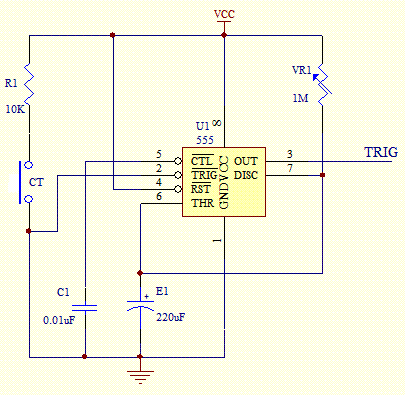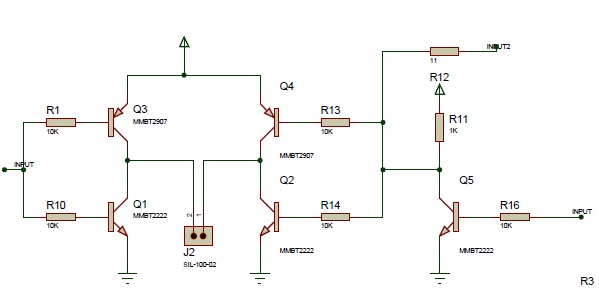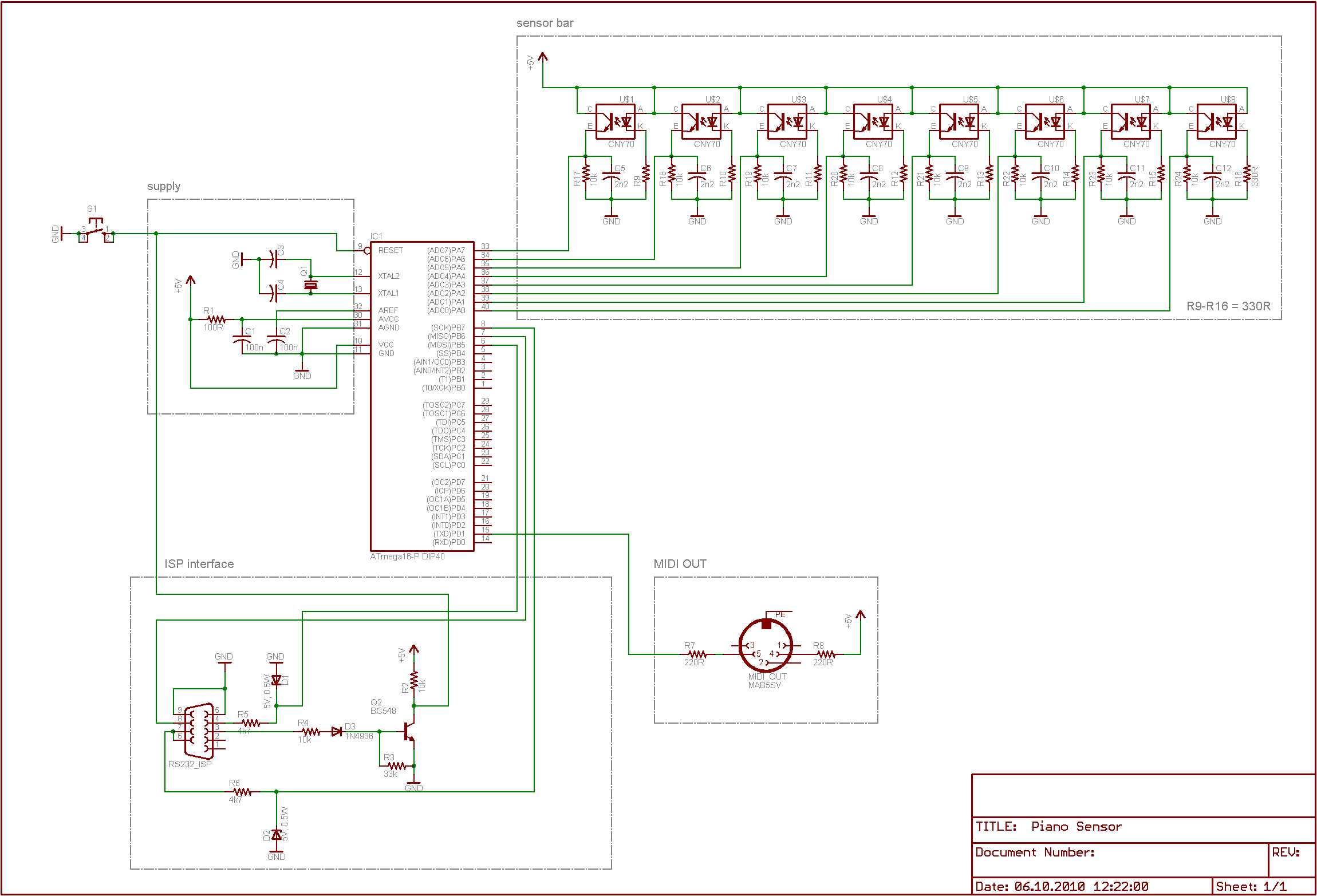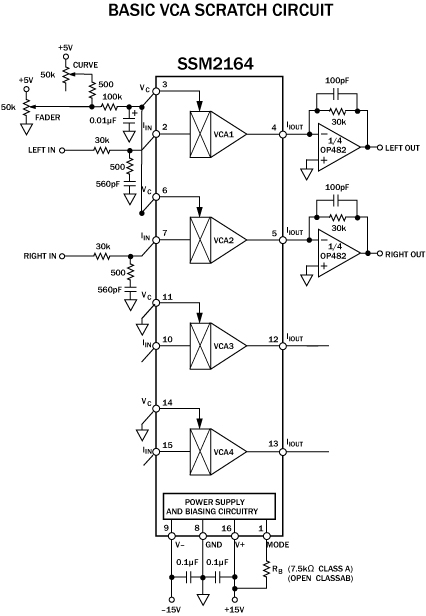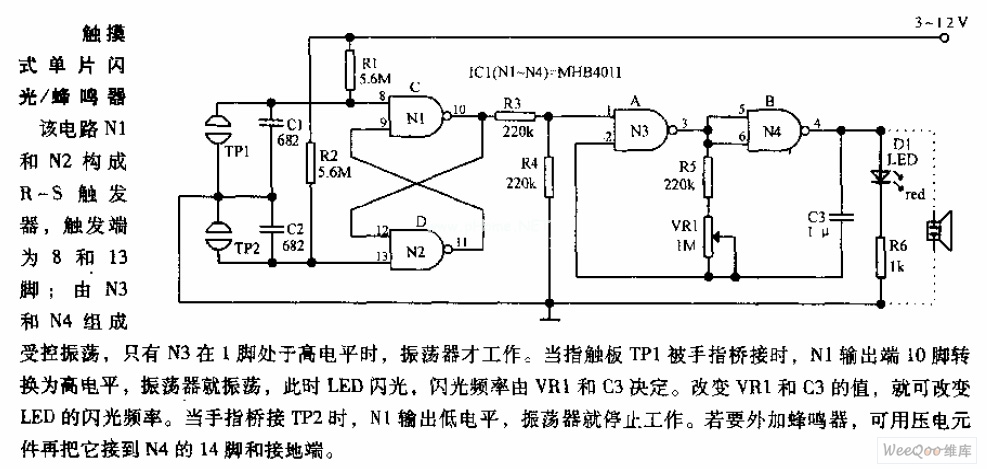
simple capacitive touch sensor
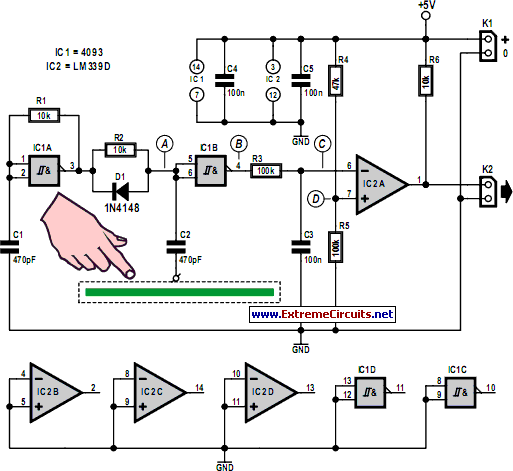
Capacitive touch sensors operate based on the electrical capacitance associated with the human body. When a finger approaches the sensor, it establishes a capacitance to the ground, typically ranging from 30 to 100 pF. This phenomenon can be utilized for proximity detection and touch-controlled switching. Capacitive switches offer distinct advantages over other types of touch switches, such as those relying on 50 Hz or 60 Hz detection or resistance-based detection; however, they tend to be more complex to implement.
Capacitive touch sensors consist of a conductive surface that detects changes in capacitance when a conductive object, such as a human finger, is near. The sensor typically includes an electrode that forms a capacitor with the surrounding environment. The capacitance value changes when a finger approaches, which can be detected by the sensor's circuitry.
The circuit design for a capacitive touch sensor generally includes a microcontroller or dedicated capacitive touch IC, which processes the capacitance changes. The sensor may use an oscillator circuit to measure the frequency change caused by the variation in capacitance. When the finger approaches, the capacitance increases, leading to a shift in the oscillation frequency. This shift is processed by the microcontroller, which can then trigger an output signal to control a device or perform a specific function.
To enhance performance, capacitive touch sensors may incorporate noise filtering and signal amplification techniques to improve sensitivity and reliability. Additionally, the layout of the electrode can significantly influence the sensor's performance, with various shapes and sizes affecting the detection range and responsiveness.
Capacitive touch sensors are widely utilized in consumer electronics, such as smartphones and tablets, as well as in industrial applications for touch-based control panels. Their ability to provide a seamless user interface without mechanical components contributes to their popularity in modern electronic designs.Capacitive touch sensors are based on the electrical capacitance of the human body. When, for example, a finger comes close to the sensor, it creates a capacitance to Earth with a value of 30 to 100 pF. This effect can be used for proximity detection and touch-controlled switching. Capacitive switches have clear advantages compared to other types of touch switches (for example 50 Hz or 60 Hz detection or resistance detection), but are often more complex to implement..
🔗 External reference
Capacitive touch sensors consist of a conductive surface that detects changes in capacitance when a conductive object, such as a human finger, is near. The sensor typically includes an electrode that forms a capacitor with the surrounding environment. The capacitance value changes when a finger approaches, which can be detected by the sensor's circuitry.
The circuit design for a capacitive touch sensor generally includes a microcontroller or dedicated capacitive touch IC, which processes the capacitance changes. The sensor may use an oscillator circuit to measure the frequency change caused by the variation in capacitance. When the finger approaches, the capacitance increases, leading to a shift in the oscillation frequency. This shift is processed by the microcontroller, which can then trigger an output signal to control a device or perform a specific function.
To enhance performance, capacitive touch sensors may incorporate noise filtering and signal amplification techniques to improve sensitivity and reliability. Additionally, the layout of the electrode can significantly influence the sensor's performance, with various shapes and sizes affecting the detection range and responsiveness.
Capacitive touch sensors are widely utilized in consumer electronics, such as smartphones and tablets, as well as in industrial applications for touch-based control panels. Their ability to provide a seamless user interface without mechanical components contributes to their popularity in modern electronic designs.Capacitive touch sensors are based on the electrical capacitance of the human body. When, for example, a finger comes close to the sensor, it creates a capacitance to Earth with a value of 30 to 100 pF. This effect can be used for proximity detection and touch-controlled switching. Capacitive switches have clear advantages compared to other types of touch switches (for example 50 Hz or 60 Hz detection or resistance detection), but are often more complex to implement..
🔗 External reference
